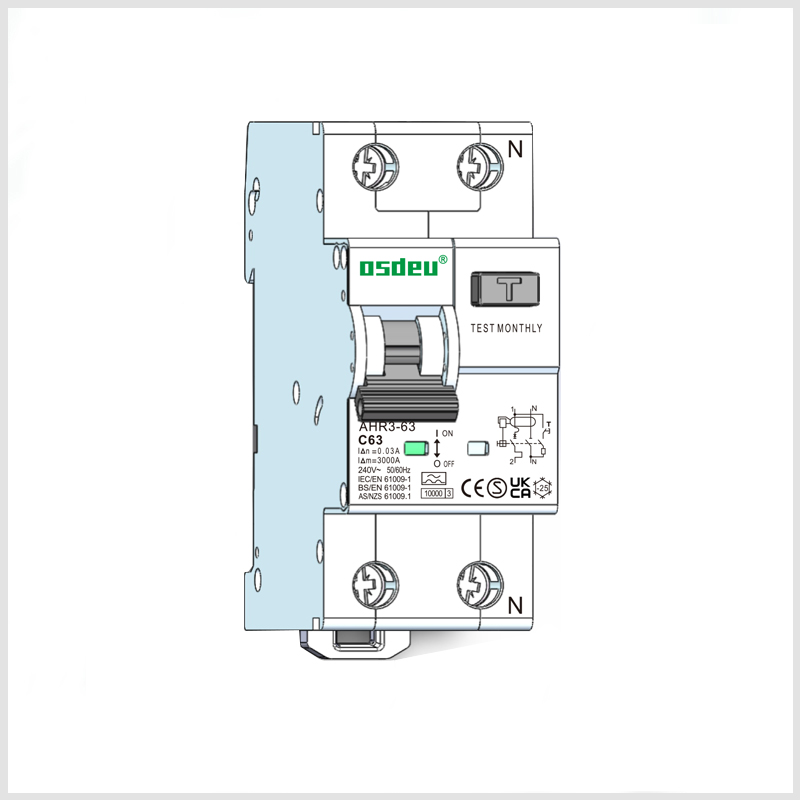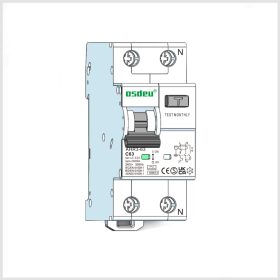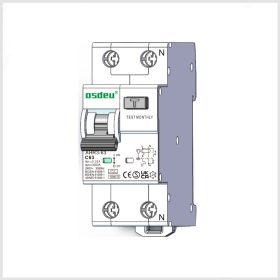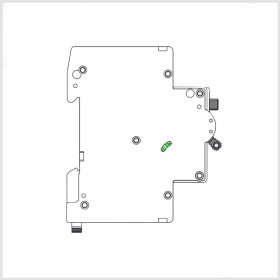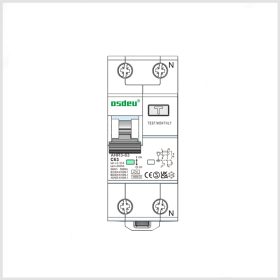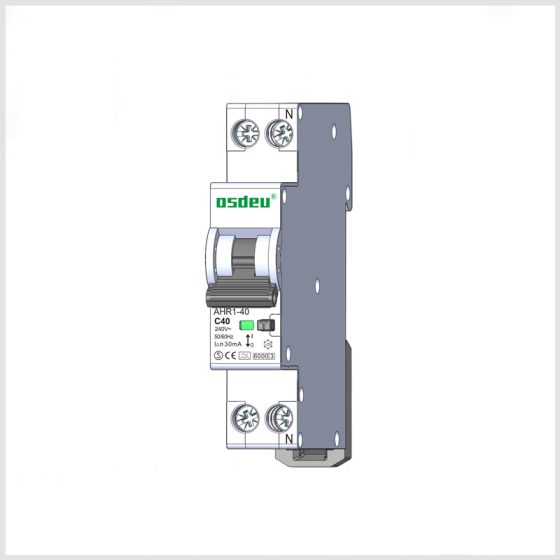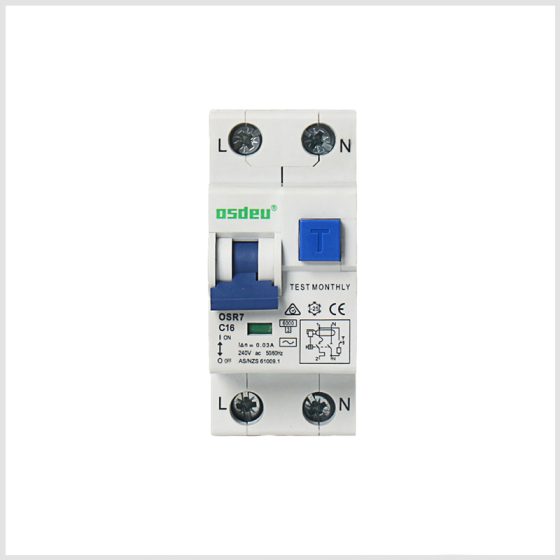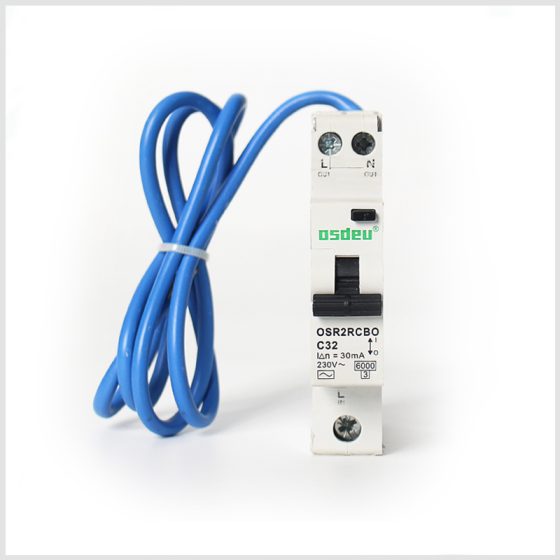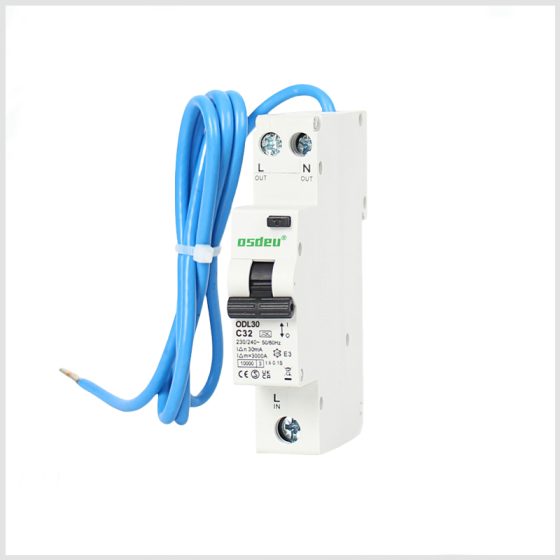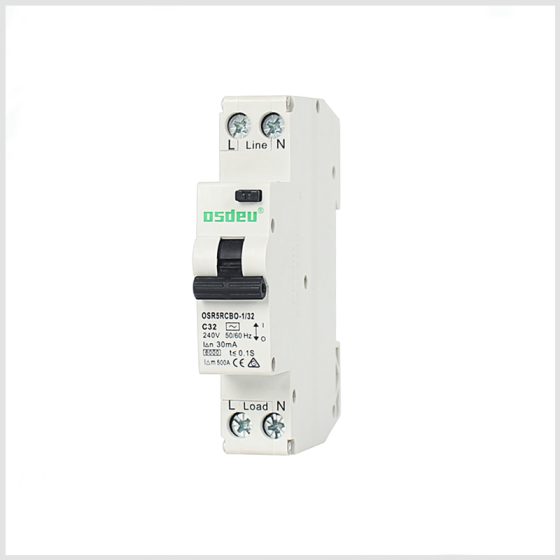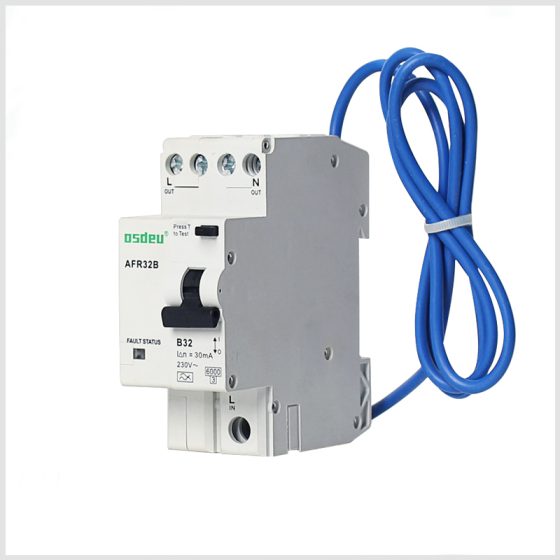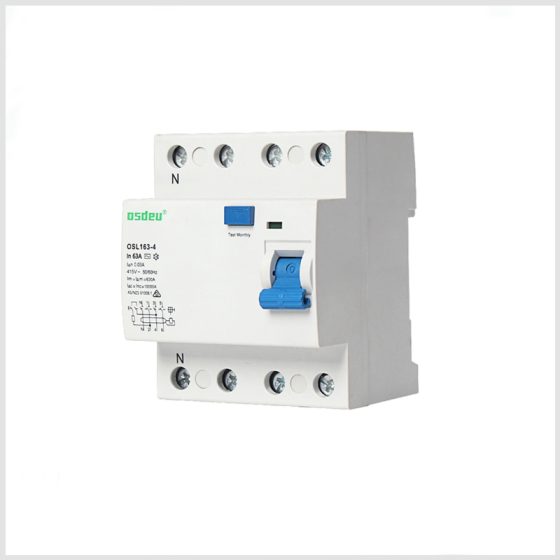Introduction:
AHR3-63 Type A RCBO – Smart Protection for EV Chargers & Modern Homes (6A-63A, 30mA-300mA)
Next-Gen Electrical Safety for DC-Sensitive Installations
As modern homes increasingly adopt EV chargers, solar systems, and smart appliances, the risk of DC fault currents grows. The AHR3-63 Type A RCBO delivers advanced protection by detecting both AC and pulsating DC leakage currents – making it the ideal choice for EV charging stations, PME systems, and PEN fault protection.
Key Benefits for Your Electrical System
✔ Type A Detection – Safeguards against dangerous DC leakage from EV chargers & electronics
✔ Dual Protection – Combines 30mA-300mA earth leakage (RCD) + overload/short-circuit (MCB) protection
✔ EV Charger Ready – Complies with IEC 60364-7-722 for electric vehicle installations
✔ Wide Current Range – 6A to 63A versions for everything from lighting to high-power equipment
✔ B & C Tripping Curves – B Curve (3-5x) for homes | C Curve (5-10x) for commercial use
✔ Compact Design – Saves space vs separate RCD+MCB installations
Why Type A RCBOs Are Essential Today
Modern electrical systems face new risks:
- EV chargers create pulsating DC currents that standard Type AC devices can’t detect
- Solar inverters and variable-speed drives generate DC components
- Smart home devices increase electronic load complexity
The AHR3-63 Type A RCBO solves these challenges by:
- Detecting AC + pulsating DC faults (6mA+)
- Providing instant disconnection (<0.1s at 30mA)
- Offering true double-pole switching (L+N isolation)
Ideal Applications
🔌 EV Charging Stations – Meets all regulatory requirements
🏠 Modern Homes – Protects smart appliances & electronics
☀️ Solar Installations – Handles DC components safely
🏢 Commercial Buildings – C Curve handles motor loads
Product Description:
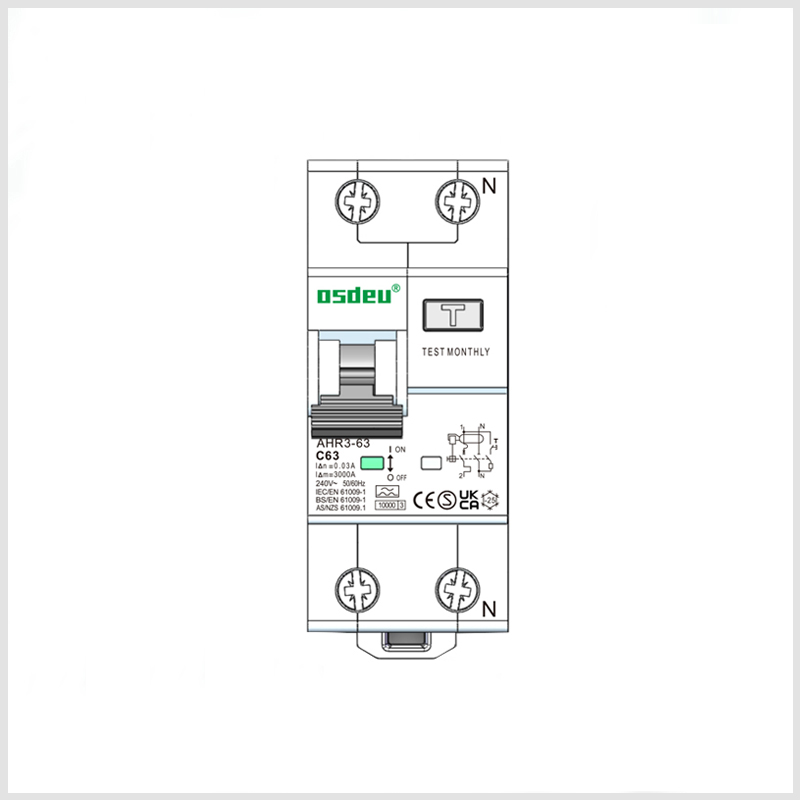
主な機能 & Benefits
✅ Electromagnetic Type – Reliable operation without electronic components
✅ Dual Protection – RCD (30mA-300mA) + MCB (overload/short-circuit) in one unit
✅ Type A Detection – Essential for EV chargers (detects pulsating DC currents)
✅ 10kA Breaking Capacity – Handles high fault currents safely
✅ B/C Tripping Curves – B Curve for homes, C Curve for commercial applications
✅ True Double-Pole Disconnection – Isolates both Live & Neutral conductors
✅ Easy Installation – Top/bottom wiring, 35mm DIN rail mounting
✅ Neutral Switching – Reduces installation and testing time
AHR3-63 RCBO Technical Specifications
| Category | Parameter | Specification |
|---|---|---|
| Standard | Compliance | IEC 61009-1, EN 61009-1 |
| Electrical | Rated Current (In) | 6,10,16,20,25,32,40,50,63A |
| Type | Electromagnetic | |
| Leakage Detection Type | Type A or AC | |
| Poles | 2 Pole (1P+N) | |
| Rated Voltage (Ue) | 230/240V | |
| Sensitivity (IΔn) | 30mA,100mA,300mA | |
| Insulation Voltage (Ui) | 500V | |
| Frequency | 50/60Hz | |
| Breaking Capacity | 10kA | |
| Impulse Withstand Voltage | 6kV (1.2/50μs) | |
| Tripping Time | ≤0.1s at IΔn | |
| Pollution Degree | 2 | |
| Tripping Characteristic | B, C Curve | |
| Mechanical | Electrical Life | 2,000 operations |
| Mechanical Life | 10,000 operations | |
| Contact Indicator | Yes (Green=OFF, Red=ON) | |
| Protection Degree | IP20 | |
| Reference Temperature | 30°C | |
| Operating Temperature | -5°C to +40°C | |
| Storage Temperature | -25°C to +70°C | |
| Installation | Terminal Type | Cable/U-type/Pin-type busbar |
| Cable Size (Top/Bottom) | 25mm² / 18-3 AWG | |
| Busbar Size (Top/Bottom) | 10mm² / 18-8 AWG | |
| Tightening Torque | 2.5N·m (22 In-lbs) | |
| Mounting | 35mm DIN Rail (EN 60715) | |
| Connection Direction | Top or Bottom |
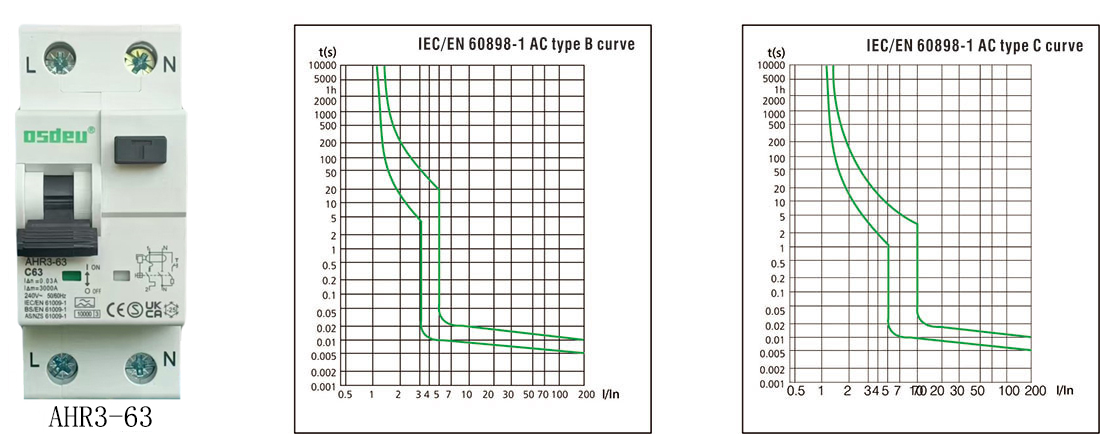 AHR3-63 Dimensions
AHR3-63 Dimensions

EV Charger RCD Requirements: Complete Guide for Safe Installation
Do EV Chargers Need RCD Protection?
✅ Yes! According to Regulation 722.531.3, all electric vehicle chargers must be protected by:
- A 30mA RCD (Residual Current Device)
- Full disconnection of both Live & Neutral conductors
⚠️ Single-pole RCBOs are NOT suitable for EV charger installations
Understanding RDC-DD in EV Chargers
What is RDC-DD?
RDC-DD (Residual Direct Current – Disconnecting Device) is:
- Built into many modern EV chargers
- Monitors DC leakage currents on the AC side
- Automatically disconnects if dangerous DC levels are detected
Choosing the Right RCD for Your EV Charger
Option 1: EV Charger WITHOUT RDC-DD
🔹 Required RCD: Type B
🔹 Why? Type B detects:
- AC leakage (standard)
- Smooth DC faults (which Type A cannot detect)
Option 2: EV Charger WITH RDC-DD (6mA detection)
🔹 Required RCD: Type A (most cost-effective)
🔹 Why?
- Type A works safely with ≤6mA DC leakage (RDC-DD handles higher DC faults)
- Most EV chargers now include RDC-DD, making Type A the standard choice
⚠️ Warning:
- If DC leakage exceeds 6mA, a Type A RCD may fail to trip
- Never use Type AC – it cannot detect DC faults at all!
RCD Installation Best Practices
Where to Install?
✔ Consumer Unit (Preferred) – Ensures full circuit protection
✔ Close to EV Charger (Alternative) – Required if no space in main panel
Critical Check!
🔎 Existing RCD Type?
- Older installations may use Type AC RCDs
- If the EV charger shares a circuit with Type AC:
- DC leakage could “blind” the RCD
- Other circuits lose protection
- Risk of electric shock or fire
💡 Solution:
- Upgrade to Type A/B for EV circuits
- Separate circuit for EV charger recommended
Key Takeaways for EV Charger Safety
| Scenario | Correct RCD Type | Notes |
|---|---|---|
| No RDC-DD | Type B | Mandatory for DC fault protection |
| With RDC-DD (6mA) | Type A | Most common & cost-effective |
| Old Installations | Check Type! | Replace Type AC with Type A/B |
Why This Matters?
⚡ Prevents electric shocks (30mA protection)
🔥 Reduces fire risks (DC fault detection)
🚗 Ensures safe EV charging (compliance with IEC 60364)
Need help choosing the right RCD? Consult a certified electrician for safe EV charger installation!


